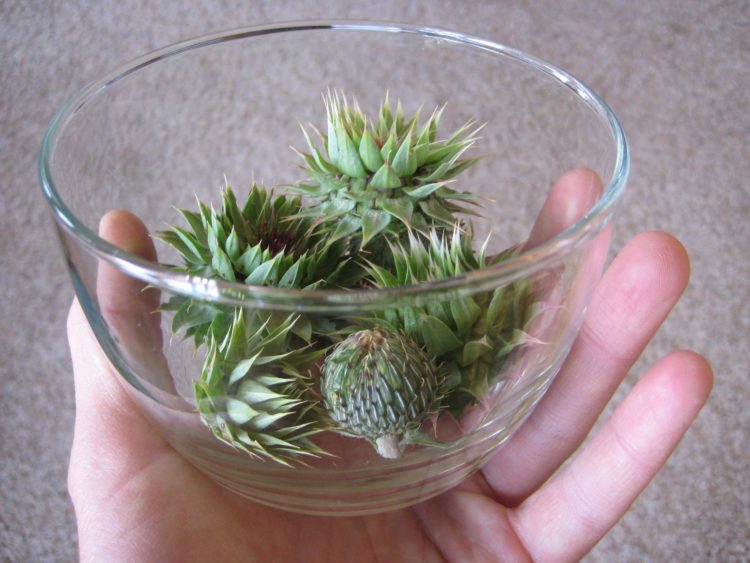
I’ve been experimenting with the various parts of thistles lately and I just couldn’t help myself–I had to take it a step further, having recently discovered the relationship between thistles and commercially-grown artichokes, which I love and miss from my years in California where they are plentiful and cheap.
The root crown of my previous experiment was artichoky enough to please me immensely. Thus even though Thayer (2006) says it is hardly worth one’s time to “peel the bristly bracts from the outside of a thistle flower bud (well before flowering time) and expose a tiny, tender, delicious, artichoke-like heart,” I had to try it.
It was a crime of opportunity, really—the “crime” being the theft of the thistle buds from the plants and also from the ants, who were swarmed upon many of them, and the opportunity being our recent foraging trip to Golden, Colorado, where the thistles were big and readily available. Because of the ants we selected our experimental buds carefully, taking six in total— four nodding or musk thistles (Carduus nutans) and two of a Cirsium of some kind.
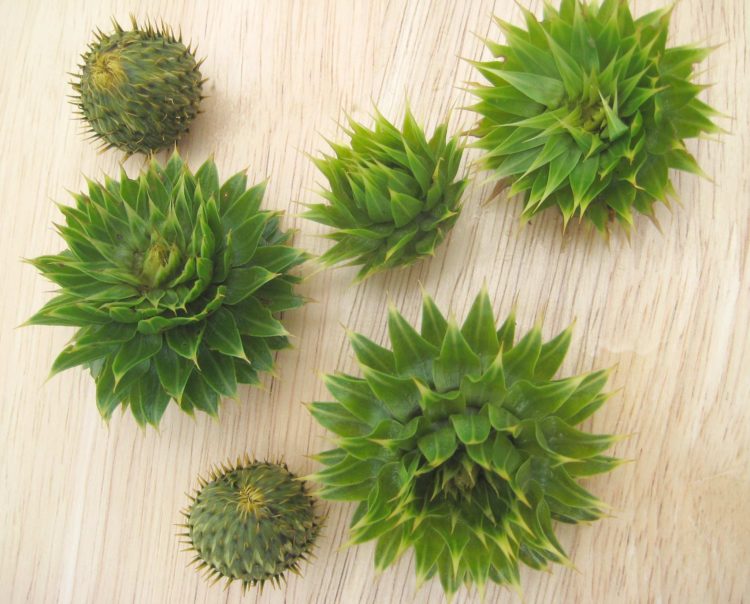
I am enamored of the thistles’ geometric, spiny, protected buds, and the fact that inside them there is something that resembles my beloved artichoke. This is why I decided to post this entry even though you’re not going to get a whole lot of valuable food intel out of it. A microscopic amount—that’s what I got and that’s what you’ll get too, unless you know of some giant mega thistle somewhere.
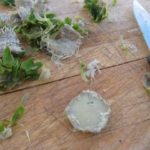
I decided to boil the buds first, hoping to relax the tiny-spine situation. I think it did, somewhat, and although I initially tried peeling all the little tiny musk thistle bracts off one by one and running my teeth along their bases to scrape off the yummy stuff like I do with artichokes, I ended up abandoning that effort and settling for cutting off the sides with a knife, scraping out the immature flowers, and exposing the heart. Sadly, the musk thistles (the ones with all the obvious spine-tipped “leaves” or bracts) yielded over-firm, inedible hearts with little brown wormy trails through them.
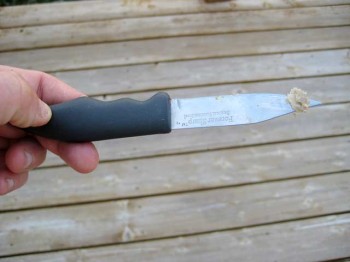
The Cirsiums (the round ones with tiny “leaves”), on the other hand, did offer up some teeny slivers of yummy hearts. I extracted mine carefully on the point of a knife and dipped it in mayonnaise while Gregg dipped his in butter. Miniscule, yes, but delicious—though the time I spent preparing them allowed dinner to go cold. Sam was right, of course; unless you’re just curious, it’s hardly worth the effort.
I’d like to take this opportunity to put the word out, however: If anyone happens to find a giant thistle, please let me know; I’ll be out there in a millisecond to harvest it. And if your giant thistles turn out to be artichokes, that’s okay too—just set me loose in the artichoke field. I’ll forage those in a heartbeat!
Updated 3.2.21
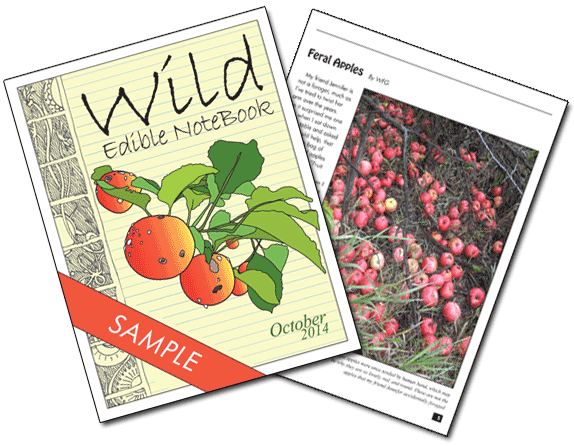
I had the same idea this morning! I had observed the Musk Thistles (Nodding Thistle) blooming in a nearby field and I’ve been contemplating their edibility as small artichokes. I picked a small bowl of young buds and set about identifying the thistle. Alas, it sounds as if they weren’t worth the pricked fingers I got trying to pick them. However, I have read that the stems are edible and very worthwhile. I may go back for the stems.
Ooh, I’d love to hear how the stems work out. Also I wonder if the musk thistle heart, which was bigger, would be better if I cooked it longer… But picking thistles with your bare hands? Very daring!
What about Milk Thistle? I remember collecting the seeds for my mother as a child, and the unopened flowers were sometimes bigger then my fist,
~M
@ Dorian: You know, I dunno… Please, if you try it before I get a chance to, do share!
Dear Wild Food Girl,
Nice blog. I like that you experiment with ways to prepare plants and that you take the time to admire their aesthetic beauty as well as their importance to other creatures besides ourselves.
I love to eat thistle stalks. They have their own unique texture and flavor and taste great on a hot, parched day. The genera Carduus and Cirsium are best, esp. Carduus nutans which most people consider a noxious weed. It’s best to wear gloves when harvesting. I pull up the whole plant, cut the root for later use, clean clean off the leaves with a large sharp knife and then peel the epidermis from the hollow stalk. I wish we had more Carduus around here (New York City). You are lucky.